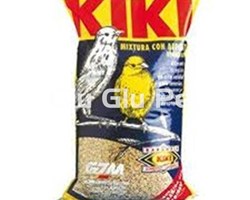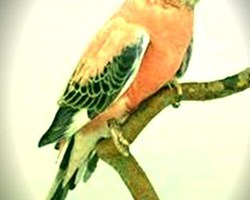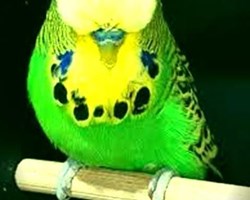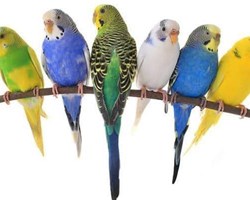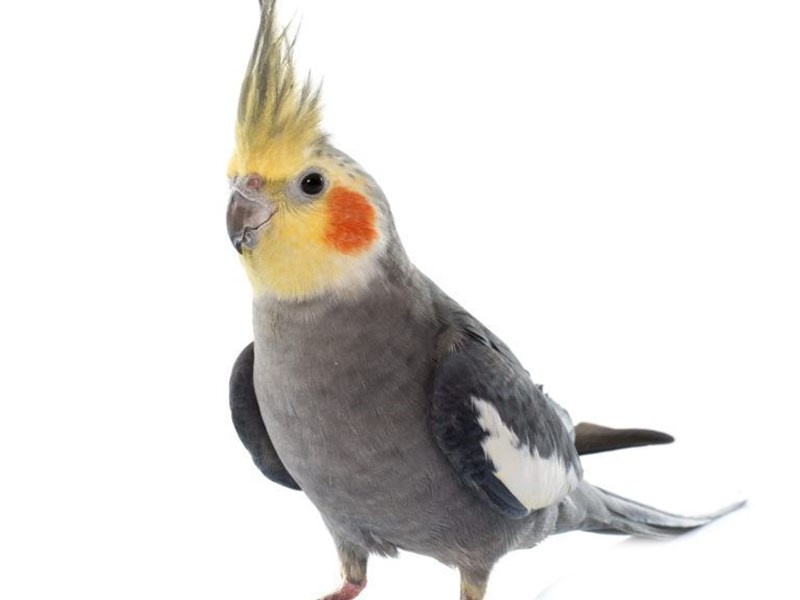
NYMPHS DATA:
Species name: Nymph, parrot or carolina.
Scientific name: Nymphicus hollandicus.
Country of origin: Australia.
Size: they reach 32 cm in length.
Weight: 80-110g.
Number of eggs per laying: 4-7.
Number of clutches: 2-3 clutches of eggs per year.
Egg incubation: 18-20 days.
Age at which feathers begin to emerge (in the wild): 5 weeks (fully developed feathers).
Average (healthy) weaning age: 9-12 weeks.
Reproductive maturity: 1 year and a half.
Expected life expectancy: 13-18 years in captivity.
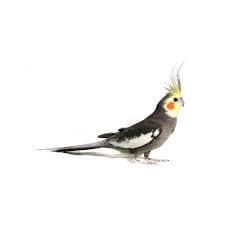
You can see related articles in: How to take care of your nymph or carolina.
DISEASES OF NYMPHS:
Nymphs are strong but prone to obesity, egg retention and candida, some mutations are weaker.
Dependency syndrome similar to cockatoos, it is often recommended to have 2 nymphs.
Avoid drastic changes in temperature and keep them out of harm's way, as they are prone to exploring.
GENERAL CHARACTERISTICS OF NYMPHS:
Nymphs are beautiful birds of the order of psittacines that belong to the cockatoo family, although they are much smaller.
They are native to Australia, where they can be found throughout the territory.
Nymphs or carolinas are characterized by having a crest, like cockatoos, but their size is much smaller and they do not exceed 35 cm from head to tail.
Of this length, almost half corresponds only to the long tail feathers.
Its original color is gray, with yellow crests and orange spots on the "cheeks" and head, which usually have a more vivid color in males.
But by breeding them in captivity, other colors have been obtained, such as copper, agate, pearl, pinto green, cinnamon and even lutinas or albinos.
Nymphs, also known as Carolinas, are small and medium-sized parrots from Australia, descending from the cockatoo family.
It is a kind of domestic bird, easy to teach, affectionate and docile.
In recent years it has become one of the most popular birds on the planet, after the parakeet.
The Carolinas, if they are raised manually, papilleros, can become very sociable animals and attached to their owners, making them the ideal pets.
They are not demanding like dogs or cats.
Most of the time the males learn to repeat melodies and whistle.
Owning a nymph is rewarding.
They are characterized by being exotic birds, with a docile behavior, not very noisy and elegant.
Its beauty is determined by its plumage, its size, its crest and its long tail.
They are birds that fall in love when you see them.
WHAT IS NEEDED TO HAVE A NYMPH AT HOME:
Nymphs should never be kept alone.
In the wild they fly in flocks, so they are always looking for someone to be close to.
If they don't have a congener, they will create that connection with you.
Although the fact that he does not separate from you may be pleasant at first, it is quite unpleasant when he starts to attract attention all the time.
It is possible that your carolina will make you notice the lack of attention through unbearable screeching.
These shrill cries are innate and serve to keep them together with the flock in their place of origin, the vast Australia.
Just as it screeches for its fellow flock, it will call for you.
This dreaded call causes the nymphs to be considered loud and has even strained some relations between neighbors.
Another reaction of these birds in terms of loneliness are mental changes and the appearance of massive behavioral disorders.
The males tend to be aggressive, while the females become apathetic.
A mirror is not a substitute for a companion and therefore plays no role in your nymph's home, it is better not to have one.
There are other much more suitable accessories for these birds.
THE COEXISTENCE OF NYMPHS WITH OTHER BIRDS:
Nymphs are peaceful birds, so they also do well with parakeets and cockatoos, as long as they are not incubating, in a cage
It may also be that the carolinas have difficulties to make a place for themselves when living with the lively and somewhat aggressive parakeets.
That is why it is best to always have the nymphs with a partner of the same species.
If you have ever seen the flight abilities of a Cockatoo, you will have realized that they are natural fliers.
In its place of origin, Australia, it is a nomadic bird that travels great distances in search of food every day.
It is convenient not to lock it up for a long time without having a couple of hours a day of free flight. ¡
HOW TO TRAIN YOUR NYMPH:
The more you support their desire to play and their need to peck, the more lively and healthy your nymphs will be.
A cockatiel that does not have too many challenges becomes listless and depressed.
It is important to get them used to contact with people from a very young age if you want to have a docile nymph.
These birds enjoy spending some time with people and become quite attached to their owners, although some do not like being picked up.
Males can sing and learn to imitate a few words, but they are much better at imitating sounds, such as melodies, sirens, ringtones, or the songs of other birds.
Females vocalize much less but are also usually more affectionate.
Nymphs need a large birdcage, with enough room to climb and place a few nymph accessories.
Some toys, hangers, mirrors and other objects will serve to entertain them while their owners are not at home.
It is not recommended to mix them with other species, as they are so calm that they can be attacked by other more extroverted birds.
REQUIREMENTS THAT THE NYMPHS CAGES MUST FULFILL:
A bird cage should be spacious, secure, and should be cleaned frequently.
For nymphs the ideal would be a minimum of 50.8 x 50.8 cm, which would give them some movement, activity and prevent obesity.
- Keep the cage in a safe place: Keep your nymphs away from dangers such as direct sunlight, kitchen fumes, cold temperatures and predators.
- Stimulate activity: the cage should have horizontal bars to encourage climbing, an open roof cage or game or flight gym are essential for exercise.
- Indoor flight cages can be easily constructed from small gauge wire.
- Secure your house against any potential hazards before letting your nymph fly free.
- Always control your flight. (For example: mirrors, open windows, fans can pose risks for the nymphs).
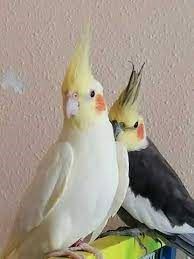
Hangers Size:
Minimum 3 sizes or shapes and textures.
Ideally 1.6 cm wooden hangers, a branch type hanger and a therapeutic cement hanger.
Additional in the cage:
- swings. Swing for lovebirds or parrots.
- Toys.
- ladders.
- Bells.
- branches.
- Secure Destructible Material
- A bathtub.
- Water dispenser: Ideally, drinking water should be changed twice a day.
The Carolinas are usually medium-sized birds, so when choosing a cage where they will stay, you must take into account the size.
The cage must have horizontal and vertical bars, with a separation between bars of no more than 1 centimeter, to ensure that your bird does not get stuck between the bars and encourage your nymph to climb.
Remember that the hygiene of the cage is of the utmost importance, therefore it is recommended to clean the cage once a week.
The cage needs to be well proportioned, large enough for your pet to spread its wings.
It is important to note that your nymph needs daily time out of the cage, this will allow her to exercise, flutter and play.
I suggest you buy toys that allow him to bite and pull so that our nymphs can be distracted for long periods of time.
THE BEST FOOD FOR YOUR NYMPHS:
Offer your nymphs a nutritionally balanced diet.
You can offer pellets or granules formulated like Tropican.
Simple seed mixes can lead to obesity, as well as deficiencies in calcium and vitamins.
Try to feed your nymph formulated diets or if you want to provide a variety of foods, at least provide seeds with nutritional value, 60% Tropican, 30% Tropimix which is the mixture of seeds and Tropican feed, millet from time to time and 10% of fruits, vegetables, rice, pasta… healthy home cooking.
Foraging is a good way to mentally stimulate nymphs, it consists of hiding or placing food in toys or any other type of object such as cardboard boxes, so that they find and obtain their food, trying to imitate what they would do in their environment. natural.
They are easy birds to feed, their diet can be based on a mixture for nymphs, we must also complement their nutrition with vegetables such as apples, pears, carrots, tomatoes, cucumbers, oranges, bananas, among others.
It is necessary to provide calcium through lime tablets, as well as provide water daily.
Sporadically this species of parrot may eat treats, such as cookies, nuts and branch millet.
Some seeds commonly used to feed the nymphs are canary seed, wheat, oats, buckwheat, among others.
It is important to note that the more seeds our birds' food has, the healthier they will grow.
Improper nutrition can cause health problems in our Carolinas, such as obesity.
Most of these domesticated birds suffer from obesity due to their high caloric intake and little exercise.
From Glu Glu Pet we advise you to take special care when supplying your food.
- Fruit bars for Vitapol nymph.
- KIKI COTORRAS, AGAPORNIS AND NYMPHS 5Kg.
- Mixture for nymphs and lovebirds Shambi 1Kg.
- PSITACUS FORMULA MINI 450g.
- VIT PRO FOR NYMPHS AND AGAPORNIS 1kg.
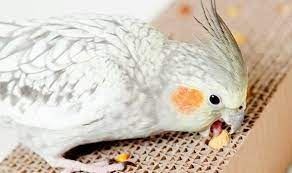
WHAT REQUIREMENTS ARE NEEDED FOR GOOD LIGHTING FOR NYMPHS:
Nymphs need 8-12 hours of natural sunlight or full spectrum light.
12 hours of uninterrupted sleep, especially for females.
Attention: Nymphs are prone to being frightened by noises at night, such as garbage trucks, so they should have a night lamp and remove excess toys at night.
HOW MUCH QUALITY TIME SHOULD BE GIVEN TO NYMPHS:
The ideal is 1 hour per day of quality time with your nymph, interactive activity, shower, training and flight.
Allow him to develop his independence.
When you are not playing with the nymph, provide her with safe toys that she can peck at, such as natural toys.
Climbing nets are also a great option to help exercise, climbing nets can be placed on the outside of the cage for the nymphs to climb during their daily time out of the cage.
Nymphs are intelligent birds, with a friendly character and practically no behavioral problems.
They easily adapt to family life and learn to interact and communicate with the people they love.
Their life expectancy is around 15 years, but with a lot of love and a good diet based on food for nymphs they can live for more than 20 years.
If you have decided to adopt one of these friendly birds, make sure you dedicate time to their training and you will achieve an entertaining, mentally active, healthy and happy pet.
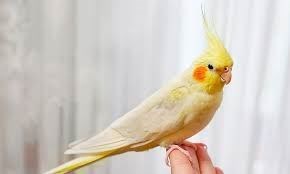
SOME CURIOUS FACTS ABOUT NYMPHS ARE:
- These types of parrots are happy if we have them as a couple, otherwise they can suffer from behavioral problems.
- They can share their environment with other species, as long as they have adequate space for their development.
- Nymphs have a life span of 10 to 20 years, being pets that accompany us for a long time of our lives.
- They usually measure between 20 and 30 centimeters, so their cages must be large enough.
- Having this type of nymphs we have to be especially careful with what could cause them danger such as ovens, poisonous plants, insecticides.
- It is important to keep an eye on your bird when they are out of their cage, to steer them away from deadly traps.
- Remember that they are like babies.

